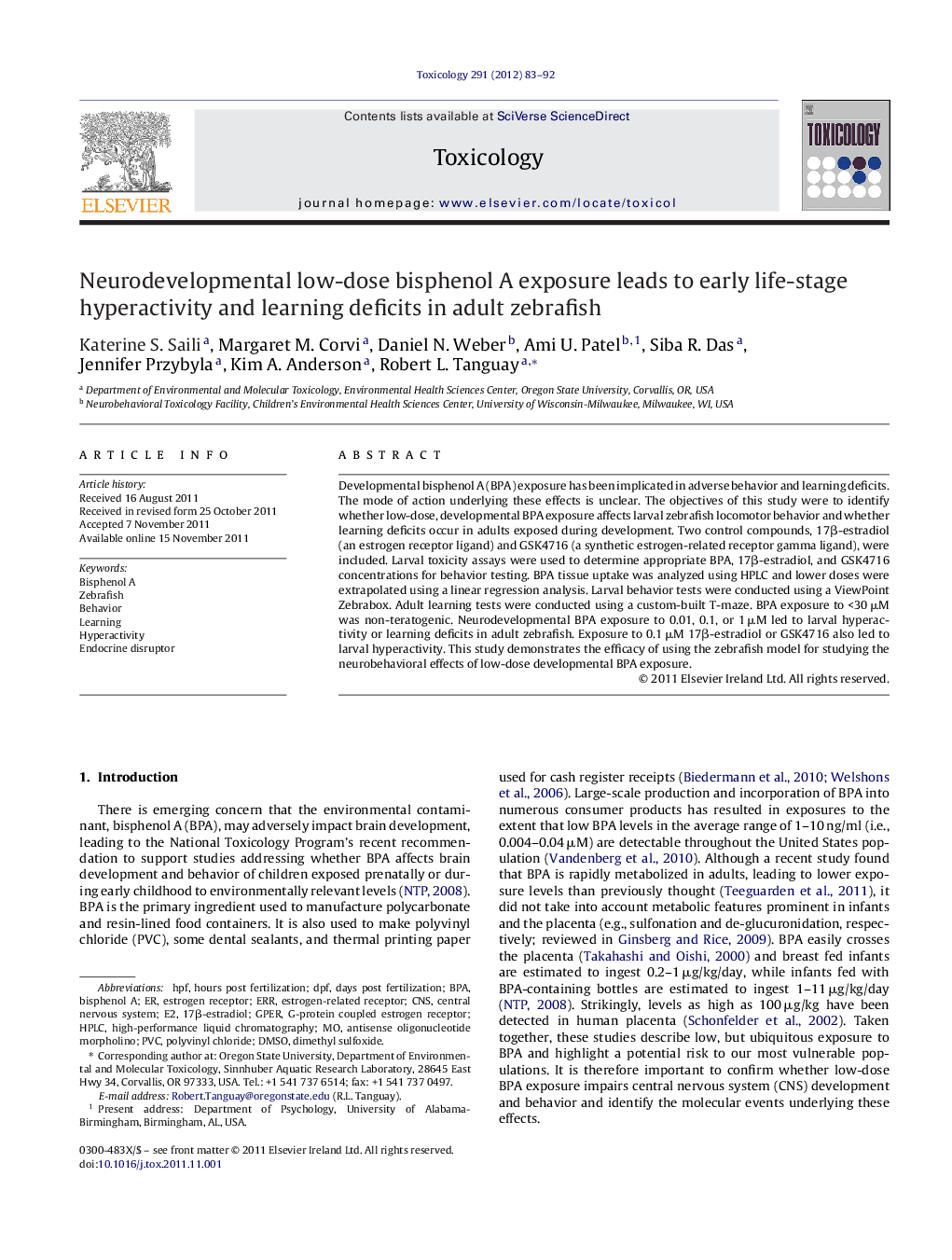| Article ID | Journal | Published Year | Pages | File Type |
|---|---|---|---|---|
| 5859591 | Toxicology | 2012 | 10 Pages |
Abstract
Developmental bisphenol A (BPA) exposure has been implicated in adverse behavior and learning deficits. The mode of action underlying these effects is unclear. The objectives of this study were to identify whether low-dose, developmental BPA exposure affects larval zebrafish locomotor behavior and whether learning deficits occur in adults exposed during development. Two control compounds, 17β-estradiol (an estrogen receptor ligand) and GSK4716 (a synthetic estrogen-related receptor gamma ligand), were included. Larval toxicity assays were used to determine appropriate BPA, 17β-estradiol, and GSK4716 concentrations for behavior testing. BPA tissue uptake was analyzed using HPLC and lower doses were extrapolated using a linear regression analysis. Larval behavior tests were conducted using a ViewPoint Zebrabox. Adult learning tests were conducted using a custom-built T-maze. BPA exposure to <30 μM was non-teratogenic. Neurodevelopmental BPA exposure to 0.01, 0.1, or 1 μM led to larval hyperactivity or learning deficits in adult zebrafish. Exposure to 0.1 μM 17β-estradiol or GSK4716 also led to larval hyperactivity. This study demonstrates the efficacy of using the zebrafish model for studying the neurobehavioral effects of low-dose developmental BPA exposure.
Keywords
BPAG-protein coupled Estrogen ReceptorGPERERRhpfDPF17β-estradiolDMSOdays post fertilizationBisphenol AHyperactivityCNSDimethyl sulfoxideBehaviorhours post fertilizationcentral nervous systemendocrine disruptorPVChigh-performance liquid chromatographyHPLCPolyvinyl chlorideZebrafishEstrogen receptorestrogen-related receptorLearning
Related Topics
Life Sciences
Environmental Science
Health, Toxicology and Mutagenesis
Authors
Katerine S. Saili, Margaret M. Corvi, Daniel N. Weber, Ami U. Patel, Siba R. Das, Jennifer Przybyla, Kim A. Anderson, Robert L. Tanguay,
